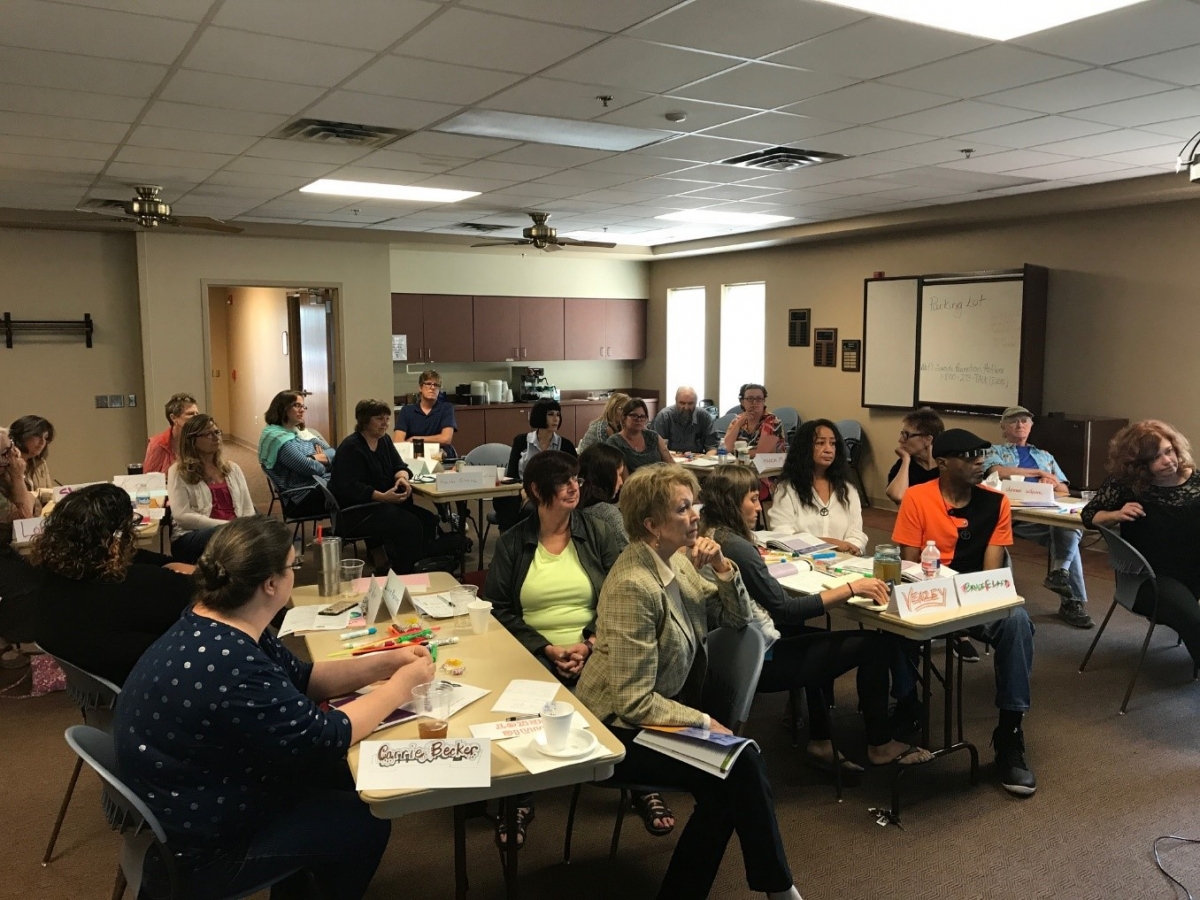Equipping Artists to be Community Leaders
Posted by Oct 11, 2018

Mr. Lawrence Brad Anderson
I joined our new staff member in a meeting last week with a prospective grant applicant. We were discussing his interest and desire to get a new keyboard for his work as a musician. This young man humbly presented himself as he shared his professional and educational background that more than qualified him to apply for the developing artist grant we administer. Our new staff member did an excellent job reviewing the grant guidelines and preparing him for the process, but as the meeting was wrapping up, I saw that something was still missing.
“May I share an observation with you before you go?” I asked. “Sure,” the artist quietly replied.
“I sense that you feel you may not be worthy of funding for your expressed need. This couldn’t be further from the truth. You have prepared as a professional in your field, you are active in musical performances, and your passion for what you do is evident. In addition to your own individual expression, I want for you also to consider being a mentor and artistic leader in this community. We need people like you to be a positive voice as an artist and a valuable member of this town. We may not always be able to anticipate your exact needs, but you have my permission to push us, ask questions, and encourage your peers to step up their game and get engaged.”
As I completed my statement he lifted his head and I could see that he was silently weeping. Whether this recognition was the cause, or as a man of color in a largely white community, he was unaccustomed to being affirmed in such a strong way. The experience served as an important reminder of the role and responsibility arts administrators serve in their community.
I have lived in Salina, Kansas for 58 years, and have been an active artist, teacher, or arts administrator for all of my adult life. During this time, I have been involved in numerous conversations with local and regional artists about wants, needs, and opportunities that exist. I worked full-time as an artist in the early ‘90s and helped start a 12-member co-op gallery on the main floor of our home. It was hard work, but exciting at the same time.
A common discussion by artists then and now involved how to connect with institutions, audience, and the market in order to be successful. “Why doesn’t the art center show MY work instead of so many out of town artists?” or “How come they don’t hire my band instead of these groups who no one knows?” or “I can’t seriously pursue my work because it will never pay off and I need to make a living,” were comments I regularly heard over the last four decades.
Where possible, I would encourage these disgruntled creatives to not wait on someone else for their opportunities, but to go make the connections on their own. This is easier said than done, especially when the necessary resources to do so are hard to find. Many artists make the mistake of expecting validation from institutions rather than equipping themselves to thrive in the best ways possible.
Many cultural arts institutions have mission statements and objectives that don’t include the welfare of local artists. Let’s face it, artists usually aren’t going to be the underwriters and sponsors of programs, and even basic patronage can be a stretch for creatives who are trying to make a living AND create art. At the same time, there aren’t many artists who have the desire, time, energy, or experience to lead their peers in the pursuit of their professional development.
This is where the local arts agency comes in. I had the privilege to be in a beta test group of local arts leaders who participated in an Americans for the Arts program “Arts Administrators Essentials: Supporting Individual Artists,” designed to help arts administrators understand, engage, and lead their organizations as they learn how to work with artists in their communities.
This six-part series is designed to equip cultural arts administrators in some best practice models regarding coaching artists, building sustainable communities, creating relevant programs, and building strong partnerships and leadership opportunities. The information contained in the program is adaptable and relevant regardless of the size of an agency budget or the population of a town. Anyone who works with artists from any discipline can benefit from learning about how to best support individual artists.

Most important, our agencies and towns can greatly benefit when individual artists are actively engaged in visioning, leadership, and opportunities to grow as creatives throughout their communities. Local artists can be as valuable resource as they help with creative problem solving for businesses, enrich social services and health care, and assist in community development efforts. As arts administration professionals, we should do all we can to help make this happen.
Take a look around you this week. Is there an artist across the table, in a studio, or on a stage who might love the opportunity to engage with their community in new and deeper ways? Take the time to invite them to the table and embrace the richness they provide. Your community and local artists will thank you for it.





